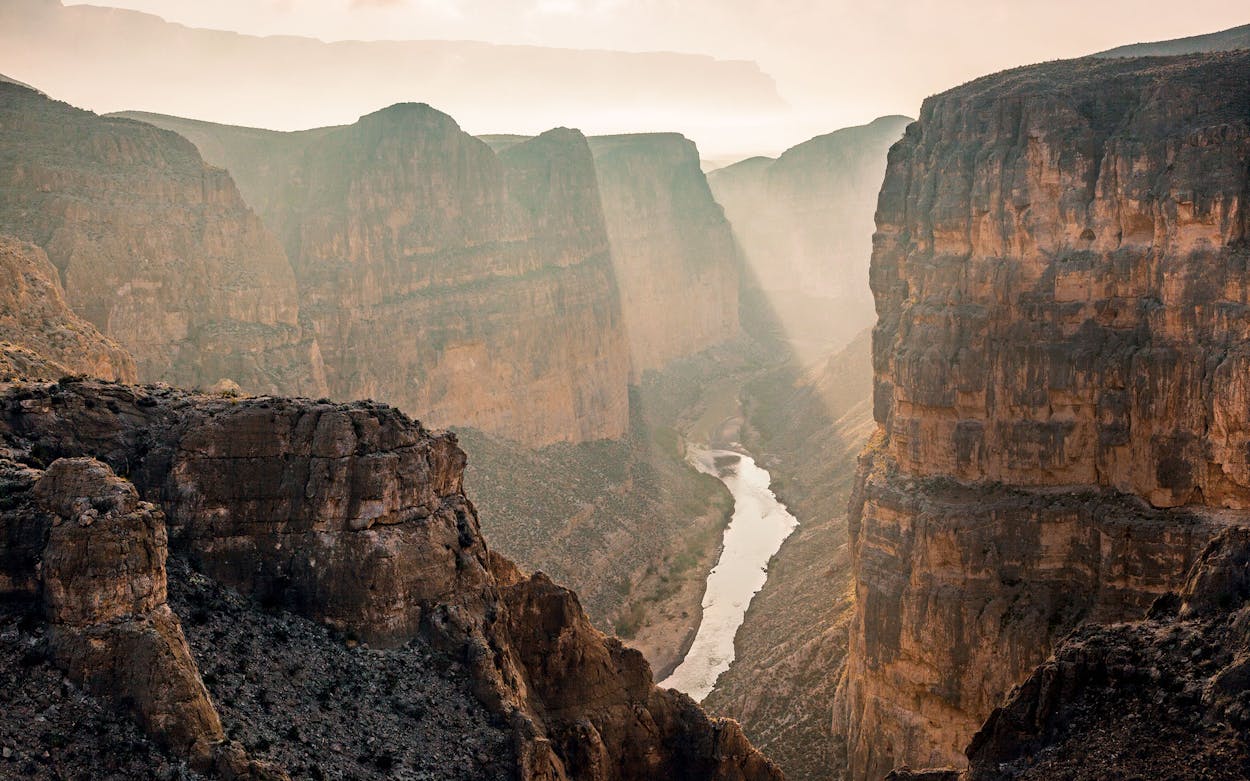Big Bend National Park was still unknown to many Texans in 1973. Not yet thirty years old, the park had only recently begun drawing more than 200,000 visitors each year to its abundant attractions—the verdant Chisos Mountains, the churning Rio Grande, the tableau of a starry night sky unmarred by light pollution. The border was essentially wide open. Terlingua was still basically a ghost town, and the drive between Fort Stockton and Persimmon Gap, the park’s northern entrance, was one hundred miles of virtually nothing. Phoning other far-flung parts of the park from inside required a long-distance call. Electric lines were strung on fence posts. And news from the outside world reached the park largely through the “local” paper, the Alpine Avalanche, published an hour and a half away. “It kind of felt like you hit the part of the map where it says, ‘There be dragons,’ and you just kept going,” said David Elkowitz, the park’s deputy superintendent, who first visited in 1979. “It was the wildest, most remote place I’d ever seen.”
It took another two decades for the number of annual visitors to regularly exceed 300,000, but over the past five years Big Bend’s popularity has soared. In 2021 a record 581,000 wilderness seekers crowded in, many of them drawn, amid the COVID-19 pandemic, by the very feature that had kept Big Bend crowd-free for so long: its remoteness. Traffic jams, fully booked campgrounds, and “one-in, one-out” rules for parking lots at popular sites such as the Lost Mine and the Santa Elena Canyon trails are now the norm during holidays. Far from a ghost town, Terlingua has become a magnet for digital nomads. After driving across the state in search of solitude and an antelope burger, big-city Texans may find themselves waiting several hours for a table at the iconic Starlight Theatre. But the sunset-lit Chisos and a cold Lone Star will still help take the edge off.
The park is also grappling with environmental issues that were barely on the horizon fifty years ago: Air pollution that obscures the view into Mexico from the South Rim. Invasive species such as aoudads (also known as Barbary sheep) and feral hogs running roughshod over the terrain. Cactus poaching. Climate change that is making the region hotter and dryer, which in turn is causing exotic grasses to spread and increasing the severity of wildfires. And a Rio Grande that has withered from a wild river into a glorified irrigation canal. Last spring, many visitors to Santa Elena Canyon were startled to find themselves walking beneath the 1,500-foot bluffs on a dry riverbed.
But in other ways, Big Bend has changed for the better. There were no breeding pairs of black bears in the park fifty years ago; today visitors have a very good chance of seeing Ursus americanus in the Chisos or even by the river. My most prized close encounter with a bear came in 2015 while I was canoeing the Lower Canyons of the Rio Grande, an 83-mile stretch of “wild and scenic river” partly managed by the National Park Service. On a lonely, treeless stretch of water, in broad daylight, we came upon a mama bear and her two cubs slaking their thirst on the Mexican side. With no cover near them, we were able to watch the family scamper upslope for several minutes.
The park’s Chisos Mountain Lodge is undergoing a $22 million renovation, and other facilities have been improved. Park education is much more sophisticated and conservation-minded than it once was. And for those who shun crowds, there’s always the nearby Big Bend Ranch State Park, which fully opened in 2007. Its 311,000 acres of harsh beauty, far less popular than those of the national park, await mountain bikers, hikers, river runners, and general-purpose desert rats.
The most remarkable thing about Big Bend is how little it has changed, even though so much has changed. “Get a mile off any paved road, and it’s the same as it was five hundred years ago, in many ways,” said Elkowitz. In an increasingly urban state with just two national parks and a state park system struggling to keep up with demand, Big Bend helps preserve what wildness remains in this once-upon-a-time frontier land.
This article originally appeared in the February 2023 issue of Texas Monthly with the headline “Big Bend, Big Changes.” Subscribe today.
- More About:
- Parks & Recs
- Big Bend









